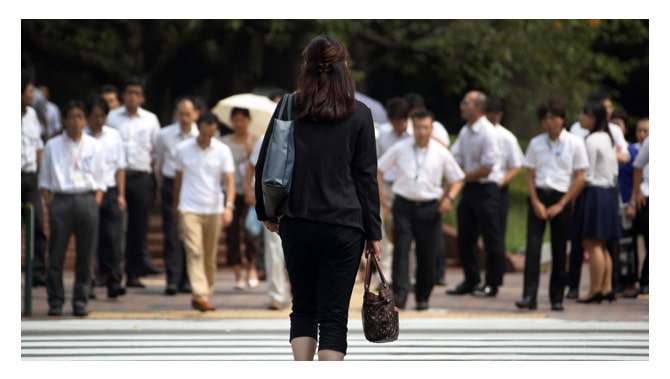
I first encountered the women-only subway section in Tokyo. Before going to Tokyo, I have heard many bizarre and alarming stories about sexual harassment occurring in both workplaces and public places such as the subway or bus, so I was not too surprised when I saw the subway carriages with cute pink flowers all over it and a “ladies only” sign on my way to work. But for me personally, it was not too useful. In fact, I frequently purposefully avoided that section, since it is more crowded than the regular subway carriages. I have no problem confronting anyone who harass me if I feel a threat is posed. But for others who are shy about speaking up, the women-only carriage can provide a degree of protection and a useful safe zone in their daily lives.
This issue almost always comes up when my friends and I talk about the Tokyo transportation system. I also often posed the question to them and to myself, “How useful is the women-only carriage really, in fighting off sexual harassment?”
Surely, as I stated as a fact before, it provides relief to the harassment problem, in the short run. Obviously, a man cannot harass a woman when she is in an all-female environment. However, one can argue that in the long run this changes nothing for the women. For example, attitudes toward sexual harassment are not changed, and neither do women’s circumstances regarding gender discrimination. The public message may become “a woman should take the women-only carriage if she doesn’t want to risk harassment”. Also it recognizes women as the weaker group in society in need of protection. This may not be the best message to send to people in any society.

Tokyo is not the only city with women-only transportation. Many other cities in the world have implemented it at some point or another, with varying degree of success. In the past few months, the first women-only bus in China appeared in the city of Zhengzhou. It provided an alternative choice for women during rush hours during the summer if they want to travel on the city’s busiest bus routes. Like its counterpart in Japan, the bus is adorned with decorations such as stuffed animal suspended from the ceiling and pink, bright colors.
Even though Chinese media speaks of the new bus very positively, some women questioned whether this method is effective in the long run, as I did. For instance, Xiao Meili from a Chinese feminist group said, “(These buses are) representative of the stereotyping of women. In the bus company’s mind, women should be pink and love fluffy toys” (USA Today).

Unfortunately, most of these women’s opinions have been silenced, as they were detained for a month last year for speaking out against the new bus, most likely for disturbing the peace. That being said, on Internet sites such as Weibo and other online discussion boards, a wider range of opinions have been expressed. Some citizens have called this new bus “very weird”, “a piece of garbage” and “good for nothing”, while others say that this is a good idea.
Unsurprisingly, many men are also unimpressed with this new bus, feeling that it is a form of reverse discrimination or extreme inconvenience. In theory, each women-only bus should be followed by another regular bus, but some men have noticed that the waiting time between them is way too long.
In conclusion, this may not be the best long-term solution to solving the harassment problem on public transportation, but it surely is much better than the public message presented by the Beijing metro police two years ago — urging women to avoid wearing miniskirts and hot pants, and “to avoid being the target of inappropriate picture-taking, (women) should shelter their bodies with bags, magazines and newspapers”.


